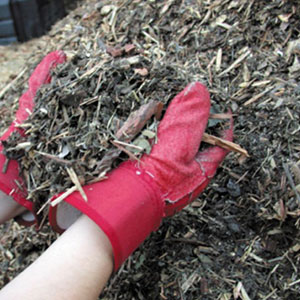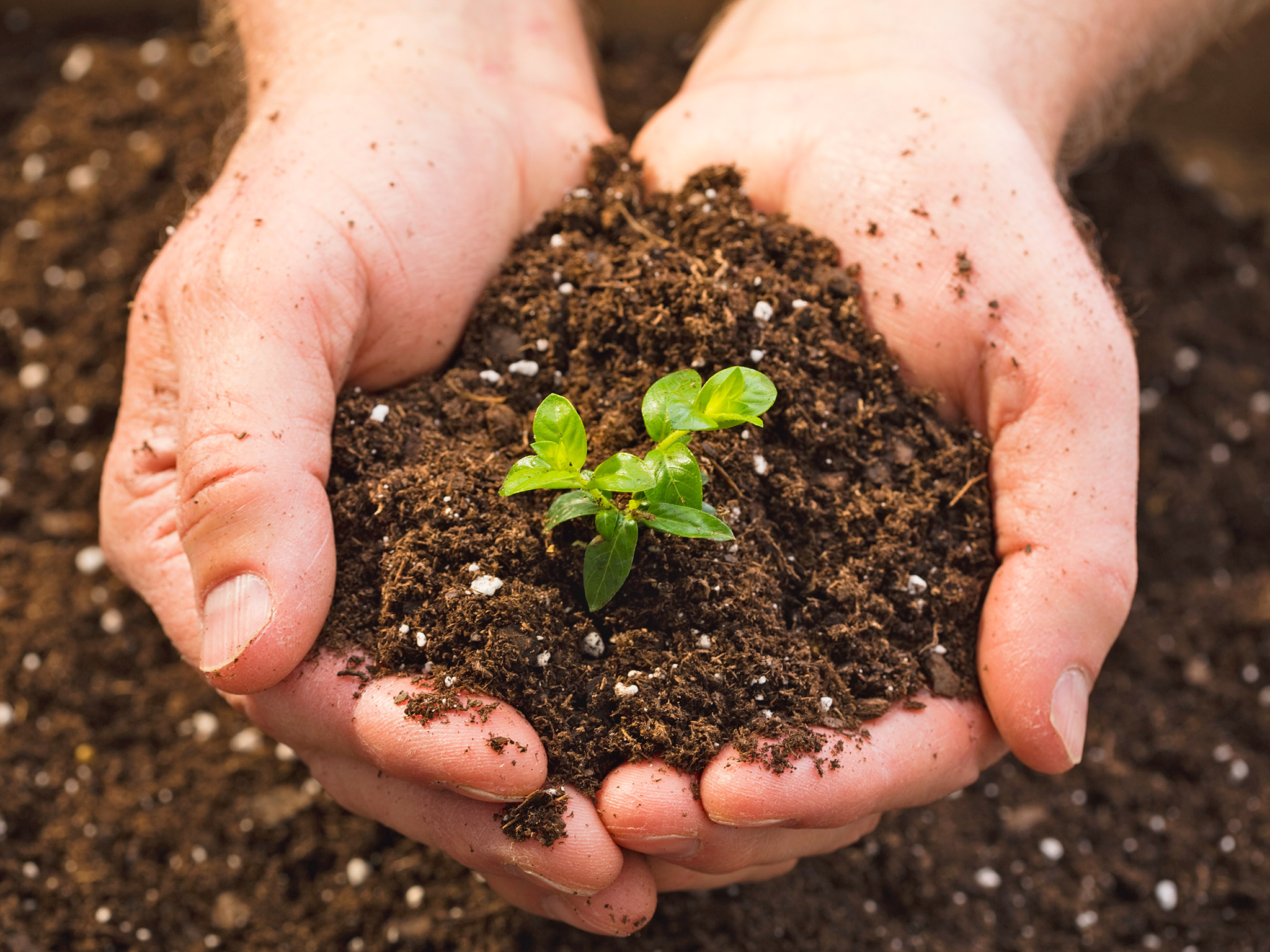
Damaged soil can be converted into healthy, fertile soil with good stewardship and sustainable practices. Image credit: Microsoft Images
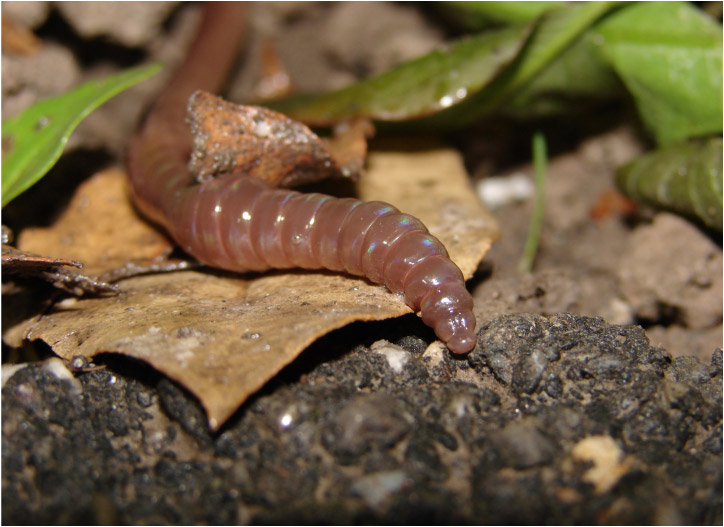
Healthy soil provides habitat for worms and other important organisms. Image Credit: Bigstock, Earth worm 1662502
- Absorbs rainfall and mitigates flooding
- Removes pollutants and cleanses water
- Stores water for plants, wildlife and people
- Provides habitat for organisms such as microscopic bacteria and earthworms that transform wastes into nutrients for plants.
- Stores atmospheric carbon
- Sustains plants, which provides food, fiber for clothing, timber, medicines and other goods
International Decade of Soils – The International Union of Soil Scientists has proclaimed 2015 – 2024 the International Decade of Soils and is a continuation of the efforts made during the International Year of the Soils in 2015.
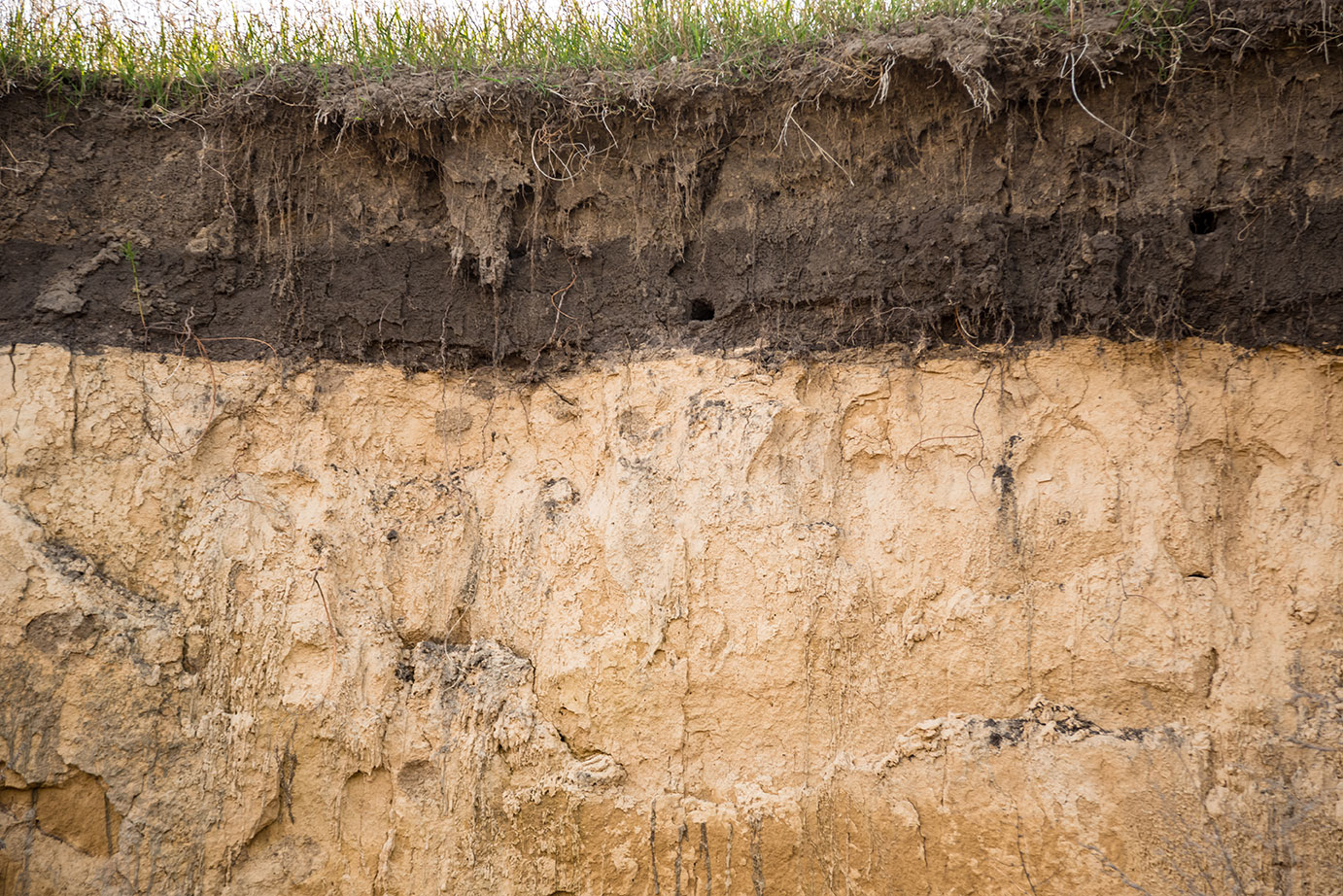
Layers of soil and roots are exposed in this clay pit. Image credit: Shutterstock/Ievgenii Meyer
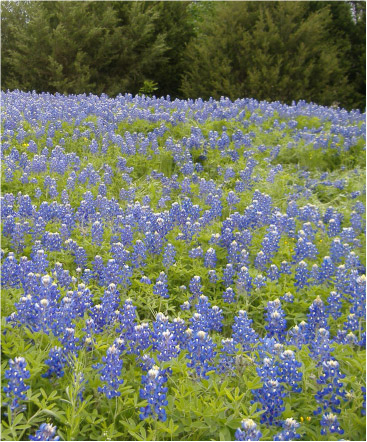
Texas bluebonnets have roots that are only a few feet deep, but they do the important job of fixing nitrogen in soil. Image credit: Wikimedia Commons
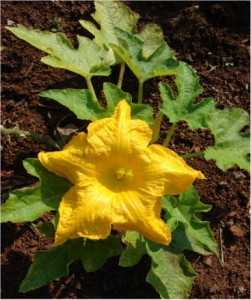
Phosphorus supports a plant’s ability to flower and develop fruit. Image credit: Wikimedia Commons
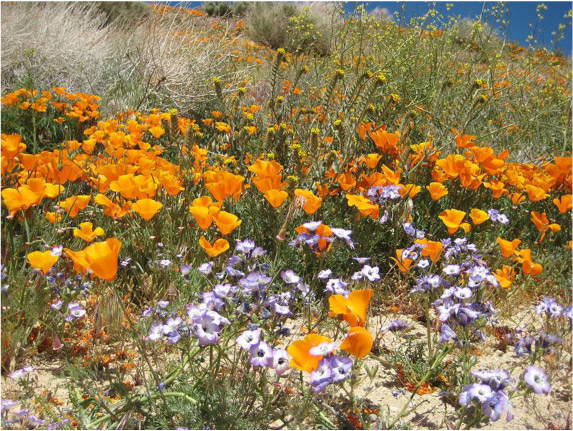
Plants, including wildflowers, also need secondary nutrients to thrive, but these are typically found in sufficient quantities without soil amendments. Image credit: Wikimedia Commons
Nitrogen (N)
Stimulates plant root growth and the uptake of other nutrients. Plants deficient in nitrogen tend to be chlorotic — meaning they aren’t producing sufficient amounts of chlorophyll, leaving them a pale yellowish green — and stunted with thin, spindly stems. Most nitrogen is derived from the decomposition of organic matter and nitrogen fixation by bacteria. To maintain nitrogen levels in fertile soils, mimic natural processes by mulching with compost or other organic matter. Alfalfa, blood meal or other natural fertilizers as well as nitrogen-fixing green manures can increase the nitrogen levels of infertile soils.
Phosphorous (P)
Phosphorus enhances photosynthesis, nitrogen fixation, flowering, fruiting and seed production. It also encourages root development. Symptoms of phosphorus deficiency include delayed flowering or fruiting and a purplish cast on leaves and stems. Bone meal, a slow-acting and long-lasting natural fertilizer, is high in phosphorous and also contains calcium. It is commonly used early in the season during planting, but it can attract animals; to deter this, mix with compost before adding it to the soil.
Potassium (K)
Potassium is known to activate 80 enzymes responsible for basic plant processes such as carbohydrate metabolism and photosynthesis. It is critical to reducing the loss of water from leaves and increases the ability of the roots to take up water. Adequate soil potassium is linked to improved drought tolerance, improved winter hardiness, better resistance to some fungal disease and greater tolerance of pests. When plants suffer from potassium deficiency, the tips and edges of the oldest leaves yellow and appear burned around the edges. Compost can help maintain good potassium levels in fertile soil, while kelp meal is a renewable source that can help raise potassium levels in deficient soils. Composted wood ash is another source of potassium, but should be used only on acidic soils.
Other Nutrients
Other nutrients are considered secondary because they are typically found in sufficient quantities in the soil and no amendments are required. Secondary nutrients include calcium, magnesium and sulfur. Micronutrients or trace elements include iron, boron, copper, manganese, zinc, chlorine and molybdenum. Except in highly acidic or alkaline soils, micronutrient deficiencies are uncommon, and a balanced supply can be maintained with regular applications of organic matter.
Unsustainable vs. Sustainable Gardens:
How They Compare
Unsustainable Landscape
- Soils are often over-compacted, which restricts the infiltration of rainwater and inhibits plant growth.
- Earthworms and other organisms that make up the soil food web are greatly reduced or nonexistent due to restricted air and water movement in the soil.
- Soils are exposed to sunlight, rain and wind.
- Soils require frequent amending to support healthy vegetation.
- Organic matter such as leaves or grass clippings are removed from the soil and disposed of off-site.
Sustainable Landscape
- Soils are living ecosystems that provide the needed air and water flow to support plant growth and a healthy soil food web.
- Rainfall is absorbed and replenishes groundwater supplies.
- Soils are protected by vegetation or mulch.
- Plants are selected that can thrive in the existing soil.
- Organic matter from the landscape is used to support the soil food web and healthy vegetation.
GET STARTED WITH SOILS
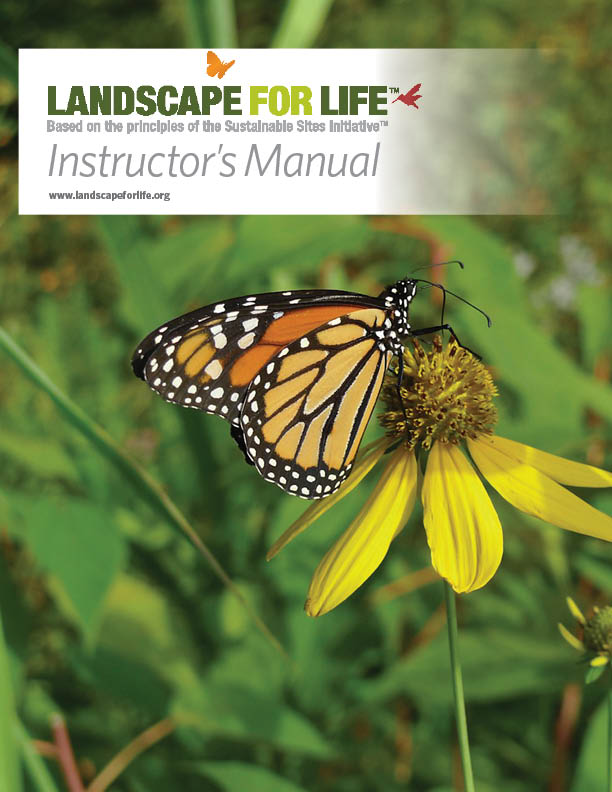
BECOME A LANDSCAPE FOR LIFE TEACHER!
Expanded training opportunities coming in 2024! Landscape For Life includes a complete kit of teaching resources which can be used to conduct classes in sustainable home gardening.
Landscape For Life™ was developed by United States Botanic Garden and the Lady Bird Johnson Wildflower Center, based on the principles of the Sustainable Sites Initiative (SITES®). The program is now a collaboration between Colorado State University Extension and the United States Botanic Garden.


